Simulation of the Number of Strawberry Transplants Produced by an Autotrophic Transplant Production Method in a Plant Factory with Artificial Lighting
Abstract
:1. Introduction
2. Materials and Methods
2.1. Runner Plants Production over One Year
2.2. Description of the Program to Predict Production of Strawberry Transplants for the ATPM
2.3. Data Analysis
3. Results and Discussion
Author Contributions
Funding
Conflicts of Interest
References
- Broome, O.C.; Goff, L.M. The Production, Testing and Certification of Virus-Tested Strawberry Stock. Adv. Straw. Prod. 1987, 6, 3–5. [Google Scholar]
- Chun, C. Propagation and Production of Strawberry Transplants. In Plant Factory; Kozai, T., Niu, G., Takagaki, M., Eds.; Academic Press Elsevier: San Diego, CA, USA, 2016; pp. 260–266. [Google Scholar]
- Savini, G.; Giorgi, V.; Scarano, E.; Neri, D. Strawberry Plant Relationship through the Stolon. Physiol. Plant. 2008, 134, 421–429. [Google Scholar] [CrossRef] [PubMed]
- Black, B.L.; Swartz, H.J.; Deitzer, G.F.; Butler, B.; Chandler, C.K. The Effects of Conditioning Strawberry Plug Plants under Altered Red/Far-red Light Environments. HortScience 2005, 40, 1263–1267. [Google Scholar] [CrossRef] [Green Version]
- Kozai, T. Closed Systems for High Quality Transplants Using Minimum Resources. In Plan Tissue Culture Engineering; Gupta, S.D., Ibaraki, Y., Eds.; Springer: Dordrecht, The Netherlands, 2008; pp. 275–312. [Google Scholar]
- Zheng, J.; Ji, F.; He, D.; Niu, G. Effect of Light Intensity on Rooting and Growth of Hydroponic Strawberry Runner Plants in a LED Plant Factory. Agronomy 2019, 9, 875. [Google Scholar] [CrossRef] [Green Version]
- Chun, C.; Park, S.W.; Jeong, Y.W.; Ko, K.D. Strawberry Propagation Method Using Closed Transplant Production Systems. Korean Patent Application No. 10-1210680, 2012. [Google Scholar]
- Park, S.W.; Kwack, Y.; Chun, C. Growth and Propagation Rate of Strawberry Transplants Produced in a Plant Factory with Artificial Lighting as Affected by Separation Time from Stock Plants. Hortic. Environ. Biotechnol. 2018, 59, 199–204. [Google Scholar] [CrossRef]
- Kubota, C.; Kozai, T. Mathematical Models for Planning Vegetative Propagation under Controlled Environments. Hortic. Sci. 2001, 36, 15–19. [Google Scholar] [CrossRef]
- Kim, S.K.; Jeong, M.S.; Park, S.W.; Kim, M.J.; Na, H.Y.; Chun, C. Improvement of Runner Plant Production by Increasing Photosynthetic Photon Flux During Strawberry Transplant Propagation in a Closed Transplant Production System. Hortic. Sci. Technol. 2010, 28, 535–539. [Google Scholar]
- Jemmali, A.; Boxus, P.; Kevers, C.; Gaspar, T. Carry-over of Morphological and Biochemical Characteristics Aßociated with Hyperflowering of Micropropagated Strawberries. Plant. Physiol. 1995, 147, 435–440. [Google Scholar] [CrossRef]
- Yamazaki, K. Yoeki Saibai zenpen; Hakuyu sha Tokyo: Tokyo, Japan, 1978; p. 41. [Google Scholar]
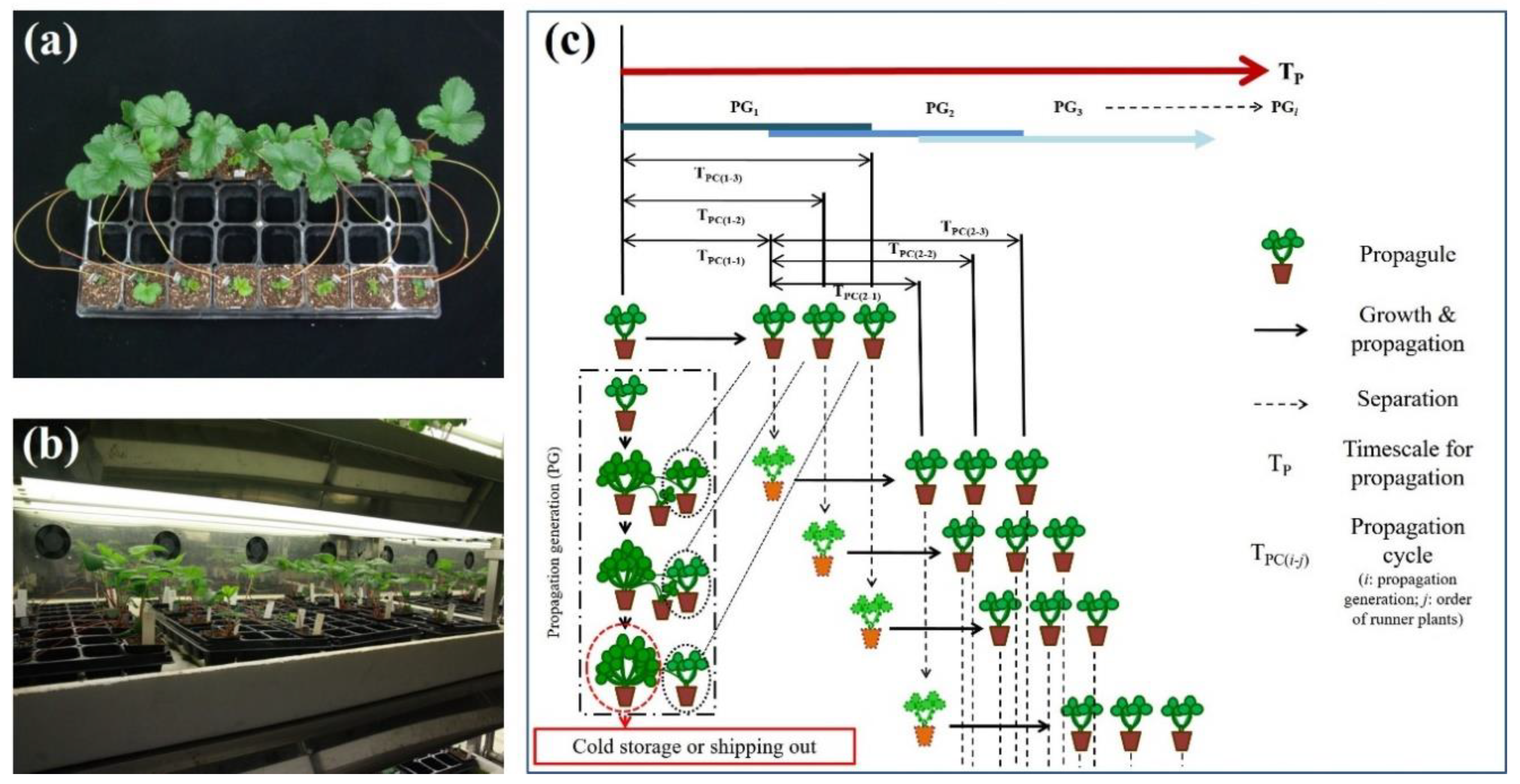

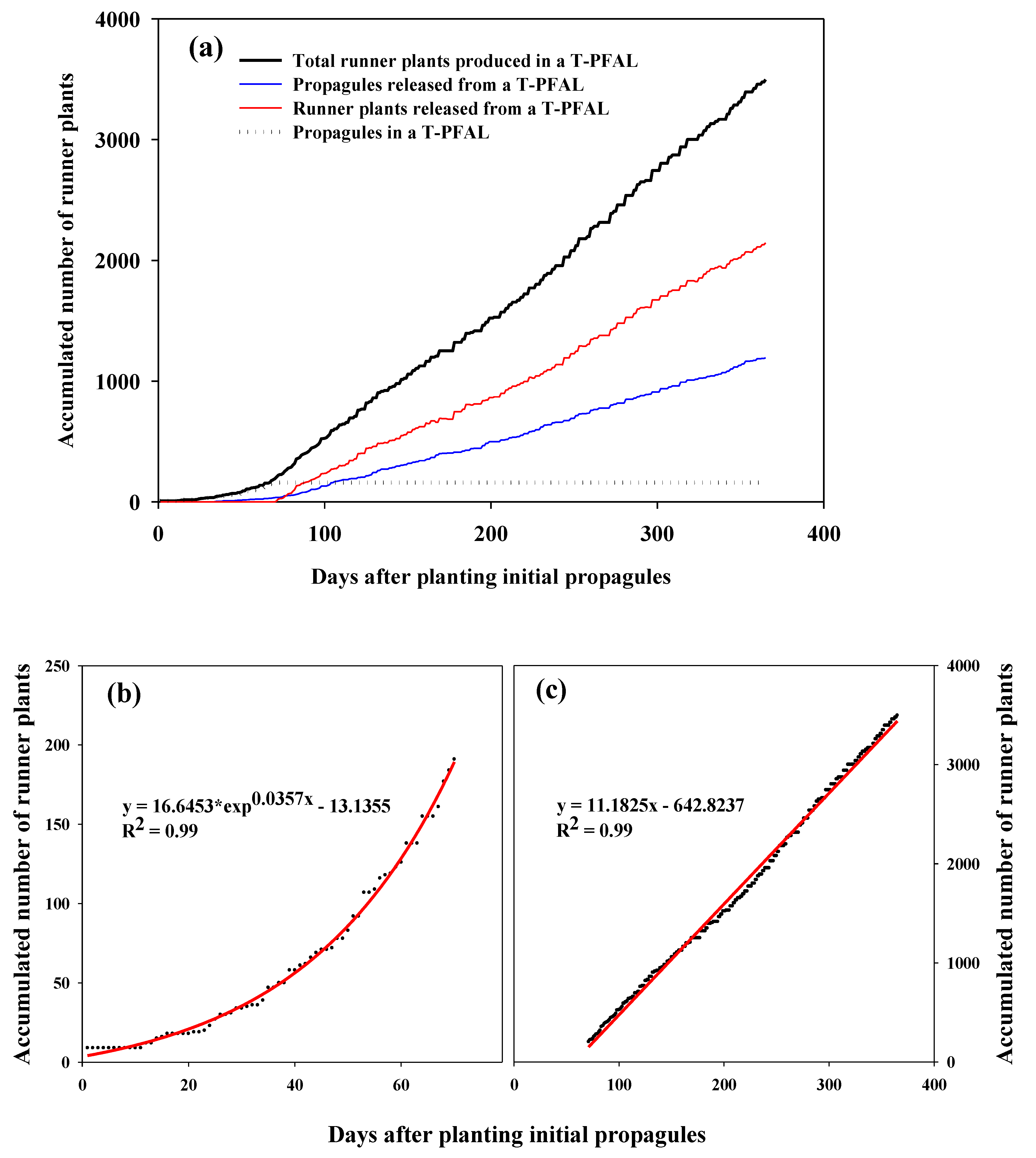
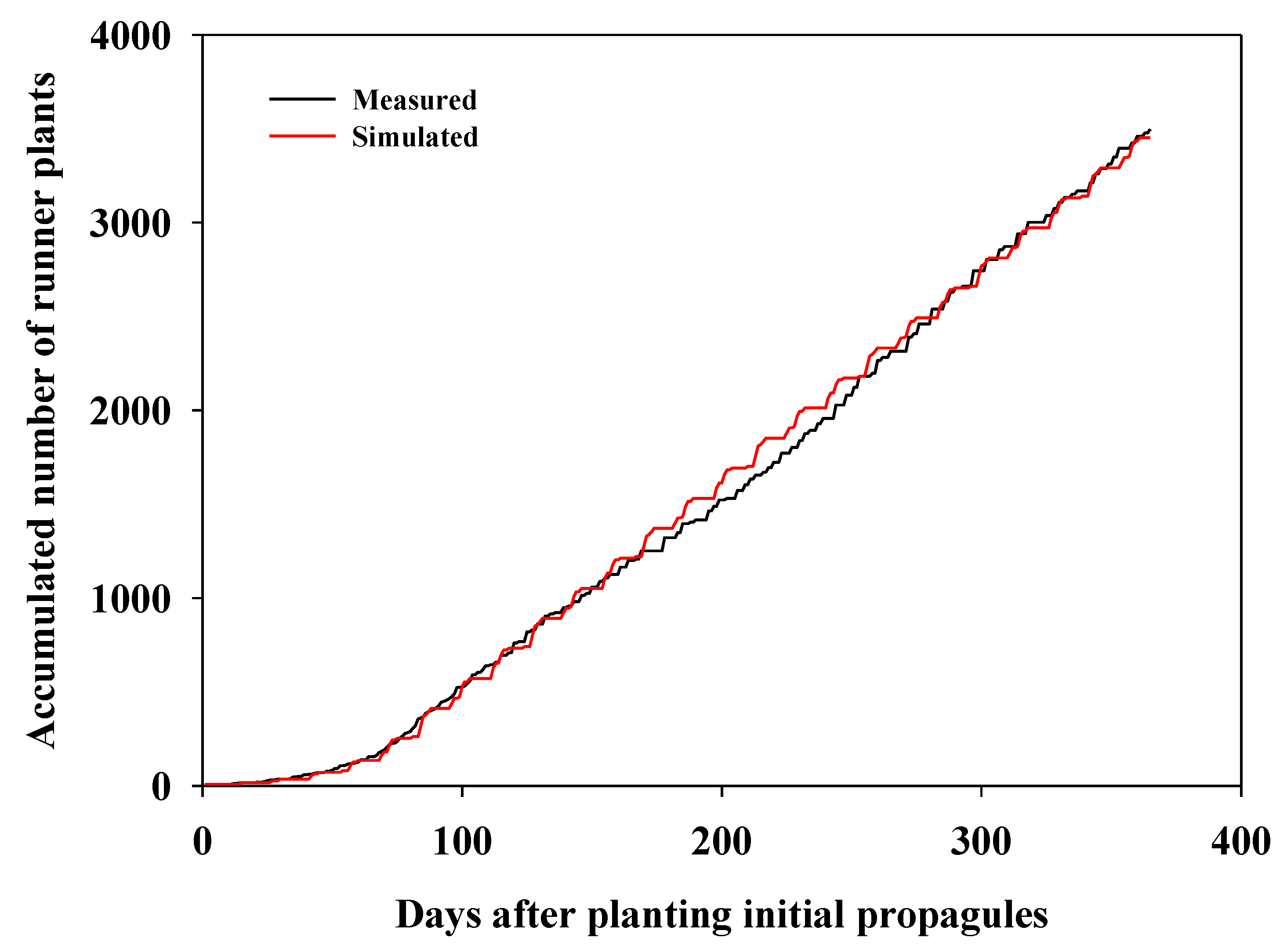
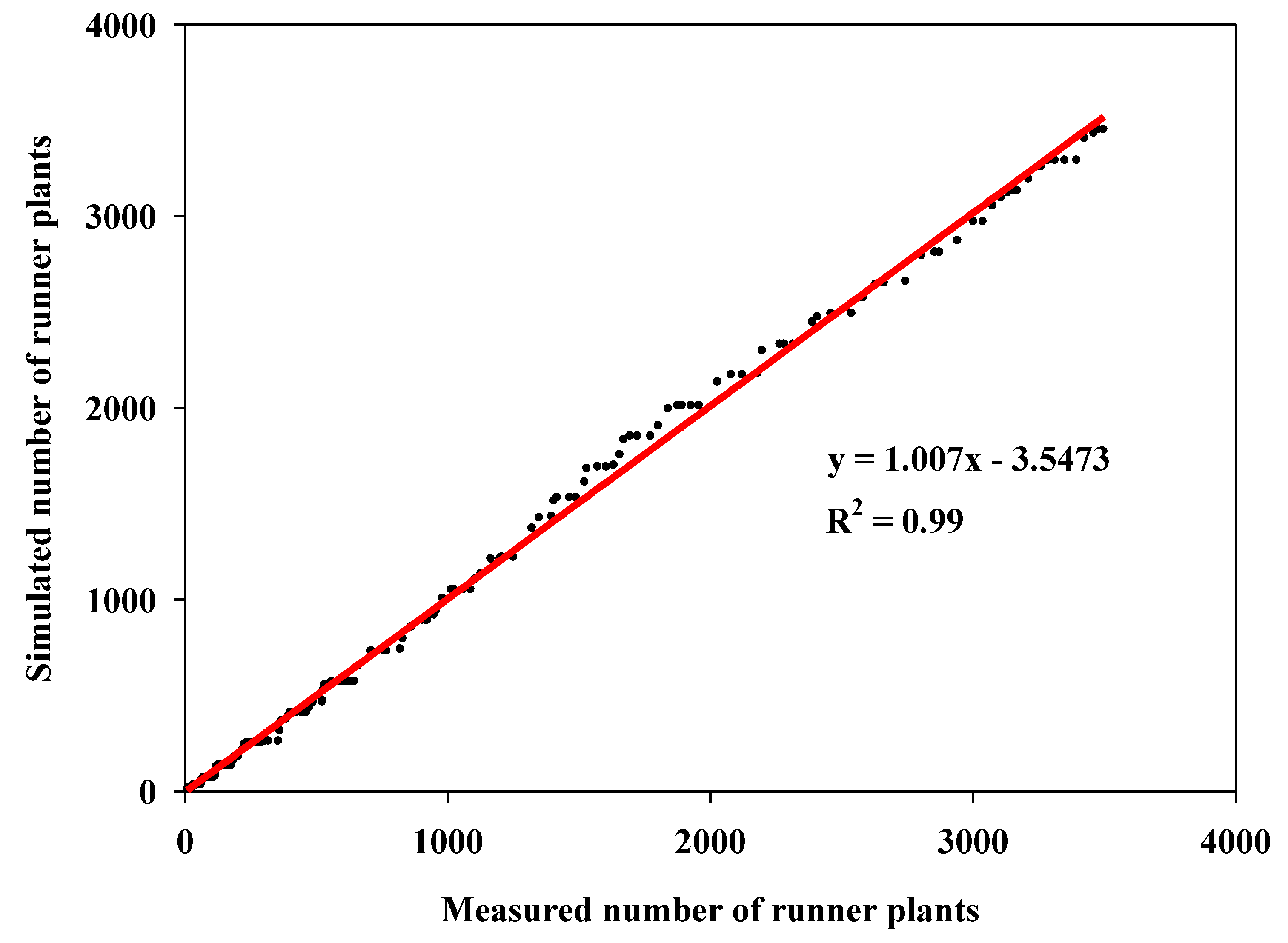
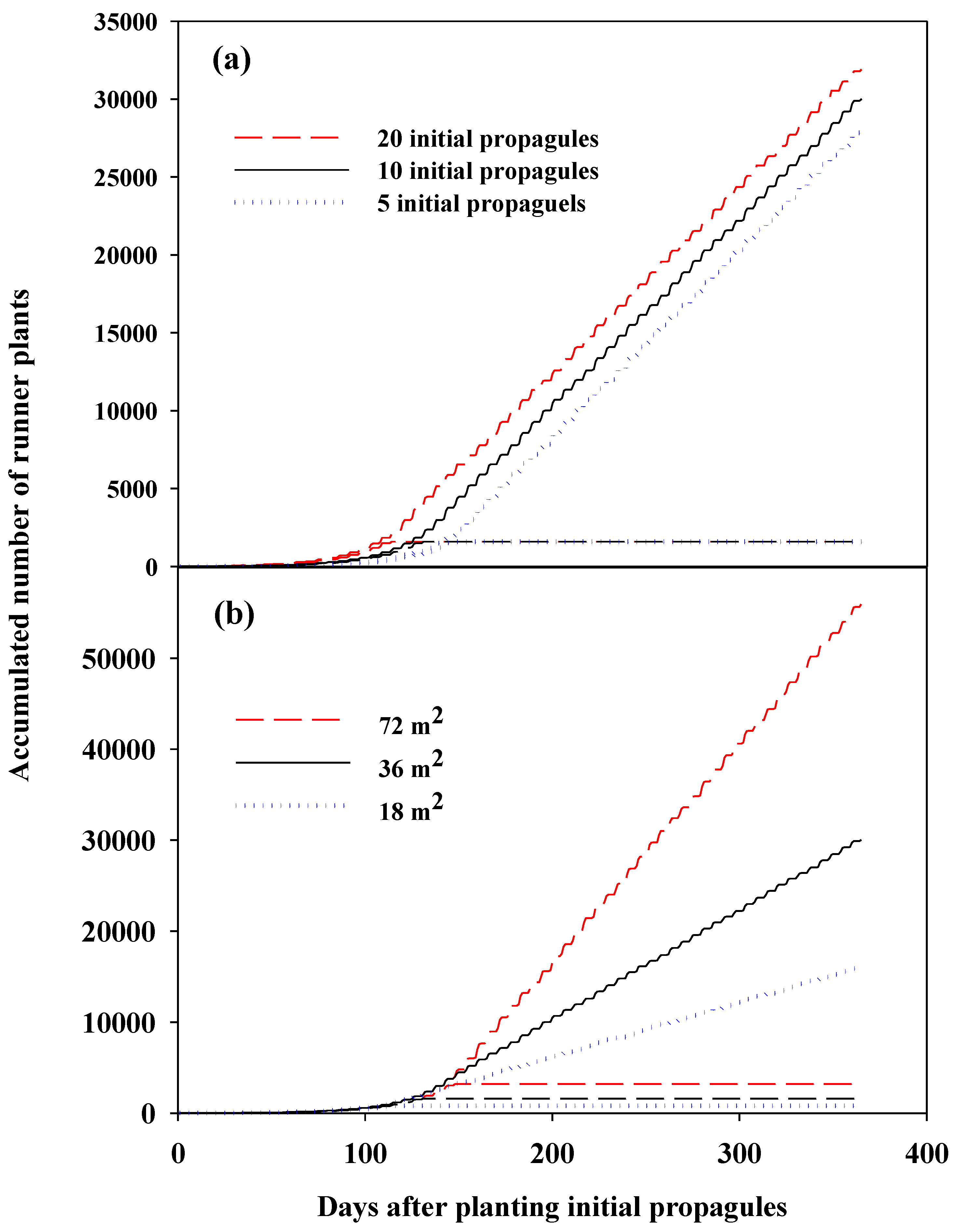
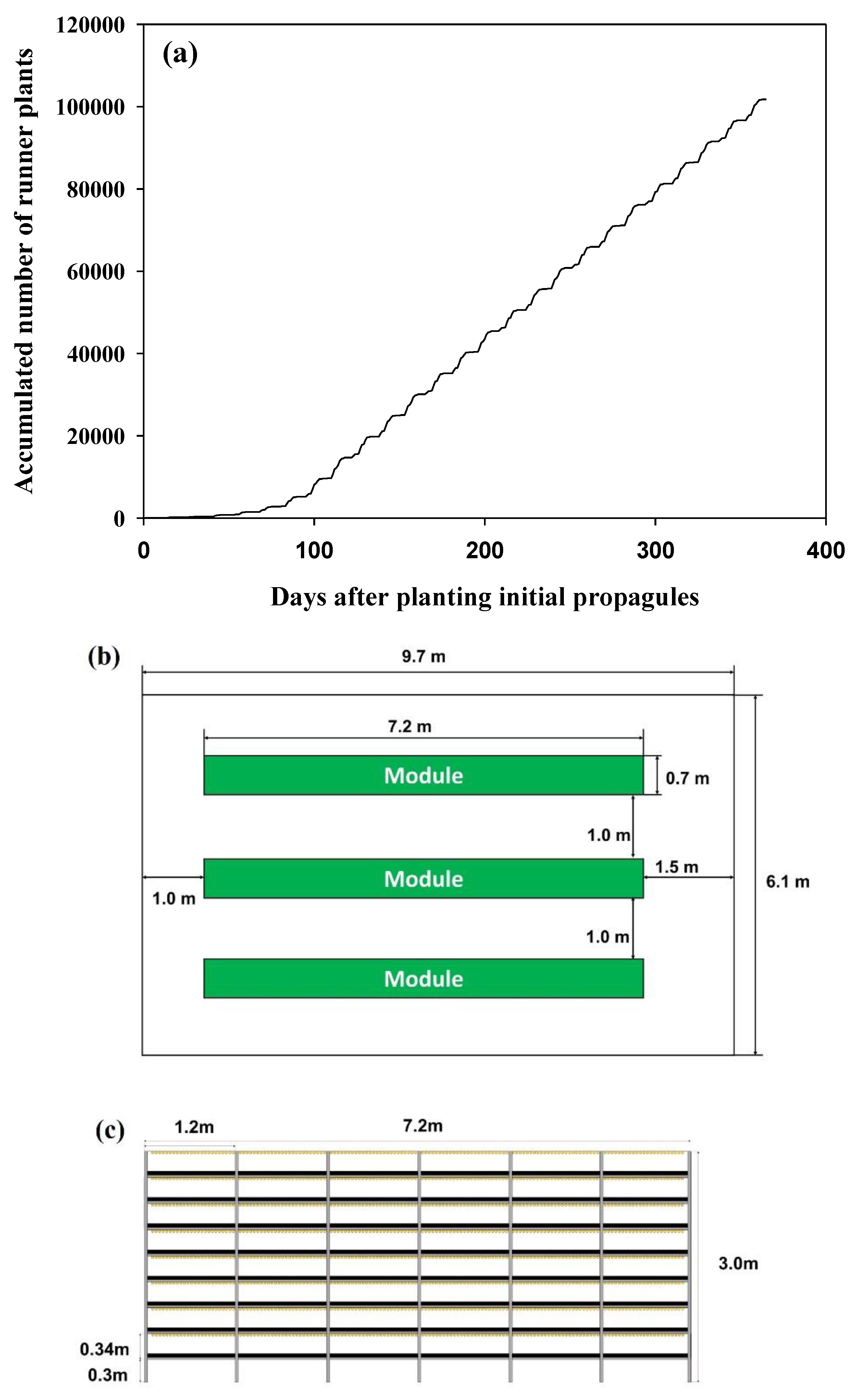
© 2020 by the authors. Licensee MDPI, Basel, Switzerland. This article is an open access article distributed under the terms and conditions of the Creative Commons Attribution (CC BY) license (http://creativecommons.org/licenses/by/4.0/).
Share and Cite
Park, S.W.; Kim, S.K.; Kwack, Y.; Chun, C. Simulation of the Number of Strawberry Transplants Produced by an Autotrophic Transplant Production Method in a Plant Factory with Artificial Lighting. Horticulturae 2020, 6, 63. https://doi.org/10.3390/horticulturae6040063
Park SW, Kim SK, Kwack Y, Chun C. Simulation of the Number of Strawberry Transplants Produced by an Autotrophic Transplant Production Method in a Plant Factory with Artificial Lighting. Horticulturae. 2020; 6(4):63. https://doi.org/10.3390/horticulturae6040063
Chicago/Turabian StylePark, Seon Woo, Sung Kyeom Kim, Yurina Kwack, and Changhoo Chun. 2020. "Simulation of the Number of Strawberry Transplants Produced by an Autotrophic Transplant Production Method in a Plant Factory with Artificial Lighting" Horticulturae 6, no. 4: 63. https://doi.org/10.3390/horticulturae6040063
APA StylePark, S. W., Kim, S. K., Kwack, Y., & Chun, C. (2020). Simulation of the Number of Strawberry Transplants Produced by an Autotrophic Transplant Production Method in a Plant Factory with Artificial Lighting. Horticulturae, 6(4), 63. https://doi.org/10.3390/horticulturae6040063






